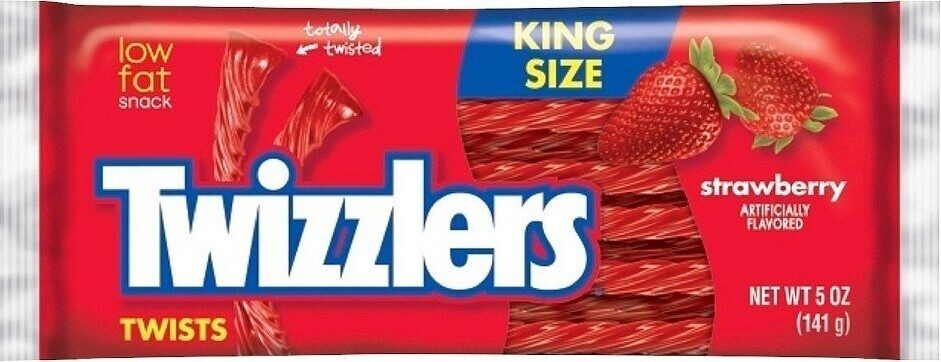Twizzlers Twists Strawberry - 5 oz (141 g)
This product page is not complete. You can help to complete it by editing it and adding more data from the photos we have, or by taking more photos using the app for Android or iPhone/iPad. Thank you!
×
Barcode: 0034000531042 (EAN / EAN-13) 034000531042 (UPC / UPC-A)
Common name: twists strawberry flavored candies.
Quantity: 5 oz (141 g)
Brands: Twizzlers
Categories: Snacks, Sweet snacks, Confectioneries
Labels, certifications, awards:
Kosher, Orthodox Union Kosher, Product of USA, With artificial flavors
Origin of ingredients: United States
Manufacturing or processing places: Estados Unidos
Traceability code: 020503190056
Link to the product page on the official site of the producer: https://www.hersheyland.com/products/twi...
Countries where sold: Bolivia, France, United States
Matching with your preferences
Environment
Packaging
Transportation
Threatened species
Report a problem
Data sources
Product added on by kiliweb
Last edit of product page on by 5m4u9.
Product page also edited by foodless, inf, openfoodfacts-contributors, roboto-app, yuka.UzZsUks1WmI5NllFa00xbjBESEZwZng2ek1DN0JtQ0dEdGNRSVE9PQ, yuka.sY2b0xO6T85zoF3NwEKvlmgdQuLdkAjUPATvtWnWm_WJIaTJOPtu2JDbEqo.











